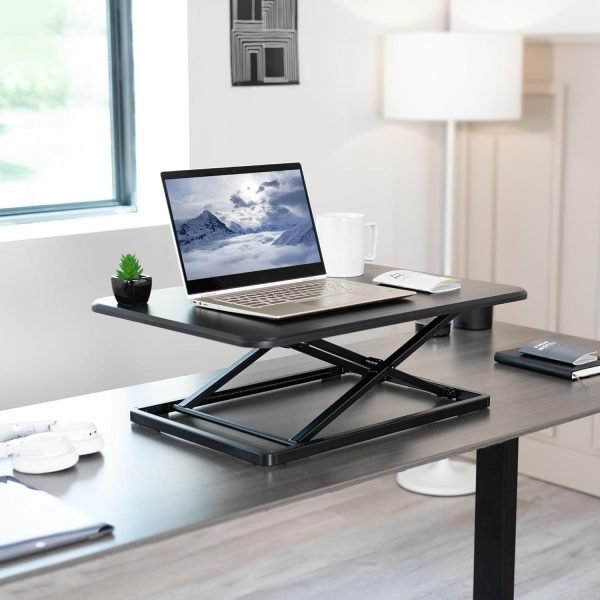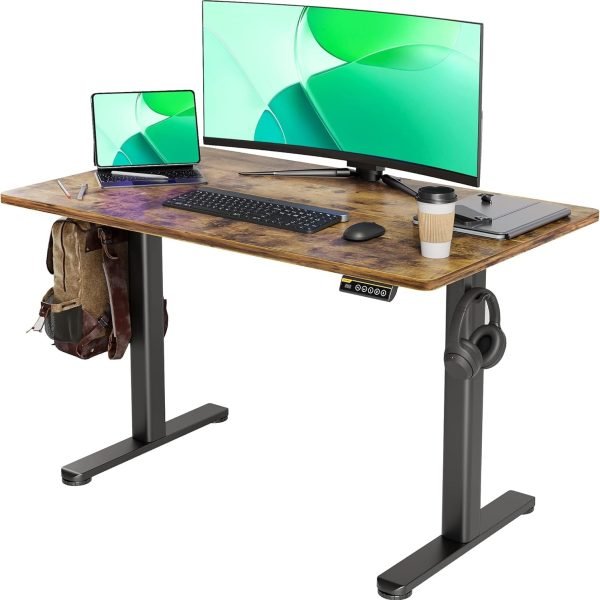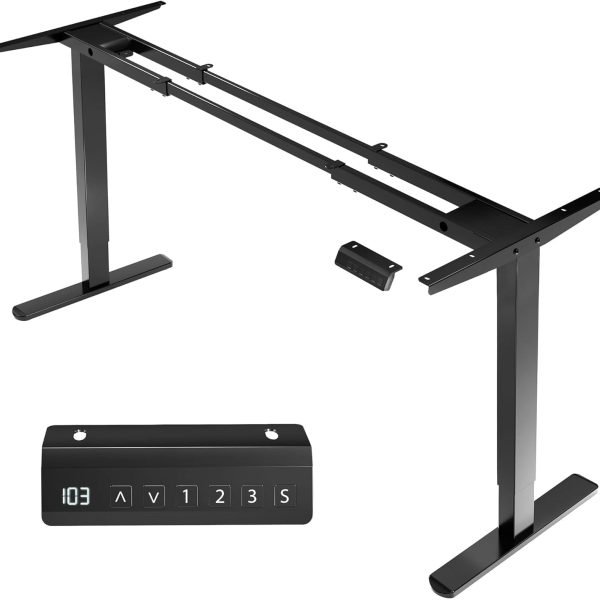I’ve watched a lot of videos regarding standing desks over the past year. It’s obvious that sitting for extended periods of time is bad for us; if we don’t get enough exercise, it may even shorten our lives. For this reason, standing throughout meetings and taking 30-minute breaks are becoming commonplace concepts.
Now, let’s explore the health benefits of standing workstations. We’ll look at the science and history underlying them, such as how standing increases blood flow and maintains muscle contraction. We’ll also look at how standing can maintain our productivity and focus.
Summary
ToggleQuick History:
Not only is a standing desk, sometimes referred to as a stand-up desk, a contemporary invention, but the idea behind it dates back millennia! These workstations let you work either standing or sitting on a high stool and are ideal for tasks like writing, reading, or drawing.
Here’s an interesting tidbit: even in the 18th and 19th centuries, well-known people like Thomas Jefferson and Winston Churchill supported standing desks. Yes, it is correct! Working upright is not a novel concept; visionaries from all around history have embraced it.
Cons of extended sitting:
The cons of extended sitting has been a topic of research for many scientists. This journal article examined the advantages of incorporating exercise into our daily life as well as the disadvantages of prolonged sitting on our health. The majority of sedentary behavior occurs in the workplace, and only a small minority of the population satisfies the worldwide physical activity standards, which prescribe 150 minutes of moderate to vigorous physical activity each week.
Many of us have musculoskeletal problems, such as stiff necks or back pain, following extended periods of time spent at a computer. You are familiar with the sensation of having your shoulders tense or your back beginning to hurt after spending all day bent over a computer. Not only can these problems cause physical discomfort, but they can also seriously affect our general well-being and productivity.
Although prolonged sitting is linked to higher dangers to our heart health and general health, the good news is that we can get beneficial results by implementing small adjustments to reduce our sedentary time. The paper found that activities like light walking or standing can have an impact, particularly for people who are less active or have diseases like type 2 diabetes. This was determined by examining seventeen prospective intervention trials.
Standing workstations as a potential choice:
We may change things up and give our bodies a vacation from the routine of sitting by introducing standing desks or treadmill workstations. Naturally, it’s critical to ensure that we’re utilizing these instruments appropriately and positioning them ergonomically to prevent more aches or strains. We can make those painful office hours more pleasant and comfortable with a little knowledge and workstation modifications. Nonetheless, a thorough study is required to completely comprehend the effects of extended sitting.
The catch is that, whereas treadmill desks provide significant physiological benefits—such as aiding overweight people in losing excess weight—they may also hurt motor skills and productivity. But standing desks, particularly those that are adjustable so you can alternate between sitting and standing, combine the advantages of good health with the efficiency of standing workstations. However, using a standing-only desk could cause aches and pains.
Your standing desk options: cheaper and expensive
You can DIY the construction of a standing desk with a variety of alternatives to meet your needs and tastes. Here are a few typical techniques:
Fixed-height desk conversion:
Permanently raise the height of an existing desk to transform it into a standing desk. This can be accomplished by raising the desk to a standing height by placing risers or blocks underneath the legs.

Install adjustable legs or desk frame with crank:
Convert a regular desk to an adjustable-height workstation by making the necessary modifications. Installing adjustable legs or utilizing a desk frame with a crank or manual adjustment mechanism are two possible solutions for this.

Tabletop or desktop riser:
To create a standing workplace, place an additional device on top of an existing desk that can be lifted or lowered. Usually, these risers provide a platform for a keyboard and monitor.

Electric standing desk:
Invest in an electric standing desk that is already assembled and has a motorized mechanism that makes it simple to change from sitting to standing heights. Memory settings for various users or postures are frequently included with these desks. Out of all the options on the list, this is my favorite. It spares you the trouble of having to unroll a tabletop riser.

Do-it-yourself standing desk:
Using components like PVC pipes, metal, or wood, create a unique standing desk from scratch. Although it calls for more sophisticated do-it-yourself abilities, this alternative offers total customization of the size, form, and features. After you’ve finished building your own standing desk, make sure it’s both useful and comfortable to use for work. Make any required changes to increase its usability.

Product Image Source: Amazon
Think about things like your budget, available space, the degree of adjustability you want, and your own aesthetic and practical preferences when selecting the ideal solution.
Don’t forget these tips:
Gradual Transition: In order to prevent pain or exhaustion, it’s critical to increase standing time gradually. Increase the duration steadily over time, starting with brief bursts.
Appropriate Ergonomics: To avoid strain or injury, proper ergonomics are essential. Make sure the keyboard, monitor, and desk height are all in an ergonomic position for your body.
Footwear: When standing for extended periods of time, wearing supportive and comfortable footwear can assist minimize foot fatigue.
Anti-Fatigue Mat: To lessen the pressure on your lower body and feet when standing, think about utilizing an anti-fatigue mat.
Movement and pauses: Whether you’re standing or sitting, make sure you move throughout the day and take regular pauses.
Personal Comfort: Not everyone is a good fit for a standing desk. It’s critical to pay attention to your body and strike a balance that suits you.
You can decide whether to add standing desks to your house or workplace by balancing these advantages and drawbacks. Think about things like your budget, available space, the degree of adjustability you want, and your own aesthetic and practical preferences when selecting the ideal solution.

Photo by ergonofis on Unsplash
Photo by TheStandingDesk on Unsplash
